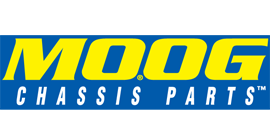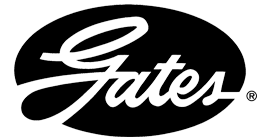
AUTONET TV
Archive for December 2024Braking Good (Brake Drum Replacement)Posted December 22, 2024 2:15 AMMaybe your vehicle feels like Breaking Bad. In other words, when you brake, things are bad. You may find it takes you a longer distance to stop, you feel a vibration, or it’s pulsating when you depress the brake pedal, or perhaps your vehicle pulls to one side. Those can be symptoms of failing brake drums. While a lot more vehicles these days have disc brakes, many vehicles still have brake drums, almost always in the rear wheels. The drum is a cast iron shallow cylinder that surrounds the other parts, including curved brake shoes that press pads against the drum to slow you down or stop the vehicle. Any time you have things going wrong with your brakes, you should get them fixed soon. Safely operating any vehicle depends on having the brakes be able to slow and stop you dependably. It can make the difference between avoiding a collision and having one. When you bring your vehicle in, a technician will inspect your braking system. Depending on the wear, drum brakes can be resurfaced or replaced. Sometimes it’s cheaper to replace the drum than to resurface it. It’s important for all the other brake system components to be inspected first and all worn parts replaced. Most of the time, when you have your drums resurfaced or replaced, the brake shoes should be replaced at the same time. You have brakes at each end of your axles, and the same brake service should be done at both ends so that both sides can have consistent, even stopping power. Your brakes can save your life. If their braking power is bad, you owe it to yourself and others on the road to let us help make them good again. Good and safe. TJ's Auto Center Inc. Easy on the Wheel (Power Steering)Posted December 15, 2024 2:15 AMSteering a vehicle these days doesn't take much effort, but if you got behind the wheel back before power steering was invented, you'd need to practically have the strength of Hercules to turn the wheel. The first power steering systems widely available changed everything. Chrysler introduced its Hydraguide power system in 1951. The "hydra" was for a hydraulic pump. It pressurized fluid that multiplied the force applied to the steering wheel so it was easier to turn the wheels on the ground. That pump got power from a belt attached to the engine, but unfortunately it wasted a lot of energy in the process. Plus, the system of hoses and pumps required a fair amount of maintenance and repair. Some say this system provides the most "natural" steering experience of power systems. Recently, automakers have turned to electric power steering. It gets its power from the car's electrical battery and charging system and uses an electric motor to turn the wheels. Since it's not powered by the mechanical energy of your vehicle's engine, electric power steering increases fuel economy. Electric power steering also doesn't require hoses and fluids, meaning there are fewer things that can go wrong. That means less maintenance. There's a third system that combines both of the others, called electro-hydraulic power steering. In this system, the hydraulic power steering pump is powered by an electric motor and, some say, gives the driver that more natural feel of hydraulic systems. Because steering is so important for the safe operation of any vehicle, it's essential to make sure yours is working the way it should. Different types of systems require different kinds of upkeep. Regular, scheduled maintenance according to the manufacturer's recommendations should help keep your steering in top shape so you can avoid any sudden steering failures. Bring your vehicle to us so a technician can inspect your steering system. And, of course, if you notice any steering problems, make an appointment right away to have those issues looked at. Now that's one stop that makes sense! TJ's Auto Center Inc. Motor Oil?The Synthetic Advantage (Synthetic oil vs Conventional)Posted December 8, 2024 2:15 AMYou’ve probably already heard that regular oil changes are extremely important for the health of your vehicle’s engine. That’s sound advice. But what you might not know is when it comes to motor oil, the real thing may not be the best thing for your engine. There are different types of motor oil: The first thing you need to know is that most new engines require synthetic oil. If synthetic oil is recommended for your car – you MUST use it. For the rest, there are many advantages to using synthetic oil over conventional oil. • Synthetic oil provides better protection for your engine while helping it to perform better. Synthetic oil can be a better choice if you live in an extremely hot or cold climate or put a lot of strain on your engine by towing or carrying heavy loads. It also may be good for older engines that sometimes have a tendency to develop sludge. Synthetic oil is a more expensive option, but you likely won’t have to have your oil changed as often. Some synthetics are recommended to last 10,000-15,000 miles/16,000-24,000 km between changes. You might also consider a synthetic blend that gives you some of the advantages of synthetic oil at a lower cost. Have a talk with your service adviser about recommendations for what will best suit your vehicle and driving habits. It’s interesting to note that in recent years, more than one out of two vehicle owners are opting for synthetic oil or a synthetic blend when they get their oil changed. Sounds like they’re on to something. In the long run, if you have fewer oil changes with synthetics, you’ll use less oil, a bonus for our environment. TJ's Auto Center Inc. Making Sense of the O2 Sensor (Oxygen Sensor Replacement)Posted December 1, 2024 2:15 AMAs you know, today’s vehicles rely on a lot of computers in them to keep them running clean and efficiently. Those computers depend on information delivered by several sensors throughout the engine and exhaust system. And one of the most important is the oxygen sensor. Known as the O2 sensor for short, it looks for too much unburned oxygen that has made it into the exhaust. That signals something isn’t right with the engine’s air-fuel mixture. The sensor sends signals to the engine’s computers, which can then make adjustments to make sure the engine is running as it was designed to. Some vehicles can have several O2 sensors, and since they can measure oxygen at various points in the combustion/exhaust process, the computers can pinpoint where the problems lie. For example, an O2 sensor can detect how much oxygen is coming out of the engine’s combustion chamber, and another one can measure oxygen coming out of the catalytic converter. As you can see, it’s important that those O2 sensors are working correctly. If they’re not, the computer is getting bad information. Garbage in, garbage out. That can result in lousy fuel economy and excess pollution coming out of your tailpipe. It can also affect your vehicle’s performance. Sometimes your Check Engine light will illuminate when one of your O2 sensors goes bad. Or you may notice your engine misfiring or idling roughly. If you notice any of these symptoms, bring your vehicle on in, and a technician will pinpoint the trouble spot. TJ's Auto Center Inc. | ||
SearchArchiveJune 2010 (71)July 2010 (4) August 2010 (4) September 2010 (4) October 2010 (4) November 2010 (4) December 2010 (4) January 2011 (4) February 2011 (4) March 2011 (4) April 2011 (5) May 2011 (5) June 2011 (4) July 2011 (4) August 2011 (5) September 2011 (4) October 2011 (4) November 2011 (5) December 2011 (4) January 2012 (5) February 2012 (2) March 2012 (5) April 2012 (4) May 2012 (5) June 2012 (4) July 2012 (5) August 2012 (4) September 2012 (4) November 2012 (1) December 2012 (2) March 2013 (1) April 2013 (3) May 2013 (2) October 2013 (5) November 2013 (2) January 2014 (2) February 2014 (3) March 2014 (1) July 2014 (4) August 2014 (7) September 2014 (4) October 2014 (5) November 2014 (4) December 2014 (5) January 2015 (4) February 2015 (4) March 2015 (4) April 2015 (4) May 2015 (3) June 2015 (5) July 2015 (2) September 2015 (2) October 2015 (4) November 2015 (5) December 2015 (2) February 2016 (2) March 2016 (4) April 2016 (4) May 2016 (5) June 2016 (4) July 2016 (5) August 2016 (4) September 2016 (4) October 2016 (5) November 2016 (4) December 2016 (4) January 2017 (5) February 2017 (4) March 2017 (4) April 2017 (3) May 2017 (5) June 2017 (4) July 2017 (5) August 2017 (4) September 2017 (2) October 2017 (5) November 2017 (4) December 2017 (3) January 2018 (5) February 2018 (4) March 2018 (4) April 2018 (4) May 2018 (4) June 2018 (4) July 2018 (5) August 2018 (4) September 2018 (5) October 2018 (3) March 2019 (4) May 2019 (2) June 2019 (5) July 2019 (2) August 2019 (1) September 2019 (4) October 2019 (5) November 2019 (4) December 2019 (5) January 2020 (5) February 2020 (4) March 2020 (5) April 2020 (1) May 2020 (2) July 2020 (1) August 2020 (5) September 2020 (4) October 2020 (4) November 2020 (5) December 2020 (4) January 2021 (6) February 2021 (4) March 2021 (4) April 2021 (4) May 2021 (5) June 2021 (4) July 2021 (4) August 2021 (5) September 2021 (3) October 2021 (5) November 2021 (4) December 2021 (4) January 2022 (6) February 2022 (4) March 2022 (4) April 2022 (4) May 2022 (5) June 2022 (4) July 2022 (5) September 2022 (4) October 2022 (5) November 2022 (4) December 2022 (4) January 2023 (5) February 2023 (4) March 2023 (4) April 2023 (5) May 2023 (4) June 2023 (4) July 2023 (5) August 2023 (4) September 2023 (3) October 2023 (2) January 2024 (1) February 2024 (4) April 2024 (1) May 2024 (3) June 2024 (5) July 2024 (4) August 2024 (4) September 2024 (5) October 2024 (4) November 2024 (4) December 2024 (4) | CategoriesWinter Prep (6)Tire Pressure Monitoring System (1)Shocks and Struts (4)Engine Air Filter (4)Warranty (1)Headlamps (6)Alignment (9)Check Engine Light (5)Maintenance (19)Parts (1)Differential Service (3)Cabin Air Filter (3)Steering (12)Fluids (8)Cooling System (10)Tires and Wheels (6)Tire Rotation and Balancing (4)Drive Train (5)Exhaust (11)Older Vehicles (2)Automotive News (4)Wheel Bearings (2)Fuel System (10)Service Intervals (3)Service Standards (5)Air Conditioning (10)Inspection (5)Battery (13)Brakes (17)Keys to a long lasting vehicle (2)Timing Belt (5)Fuel Economy (8)Transmission (5)Alternator (7)Auto Safety (5)Safety (2)What Customers Should Know (83)Fuel Saving Tip: Slow Down (2)Dashboard (1)Windshield Wipers (3)Oil Change (9)Customer Detective Work (1)Shocks & Struts (3)Safe Driving (1)Water Pump (2)Tires (12)Suspension (2)TPMS (3)Spark Plugs (2)Winter Tires (1)Fuel Pump (1)Brake Service (6)PCV Valve (1)Trip Inspection (2)Transfer Case Service (1)Fuel Filter (1) | |

OUR REVIEWS


Howard L.The business always does a great job and takes care of him. They are very polite.











